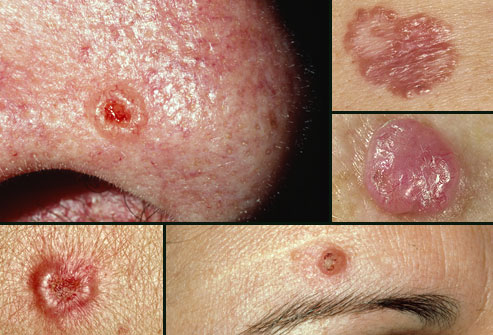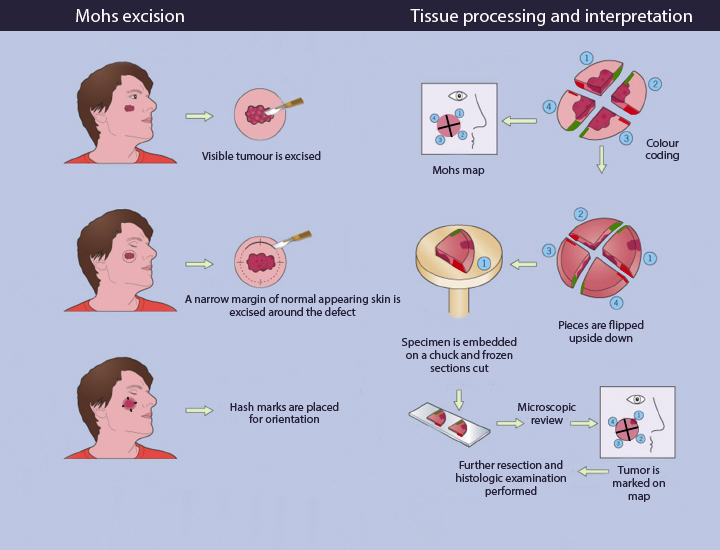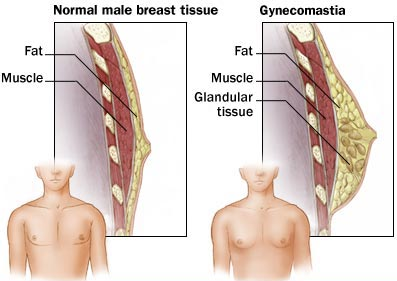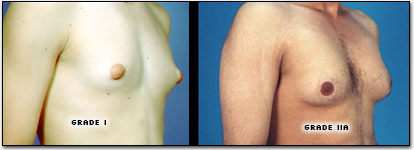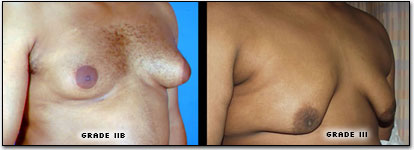MOHS surgery
Developed by Dr. Frederick Mohs in the 1930s, Mohs micrographic surgery has come to be accepted as the single most effective technique for removing Basal Cell Carcinomas and Squamous Cell Carcinomas (BCCs and SCCs) (pic, 1) , the two most common skin cancers. It accomplishes the nifty trick of sparing the greatest amount of healthy tissue while also most completely expunging cancer cells; cure rates for BCC and SCC are an unparalleled 98 percent or higher with Mohs, significantly better than the rates for standard excision or any other accepted method.
The reason for the technique's success is its simple elegance. Mohs differs from other techniques in that microscopic examination of all excised tissues occurs during rather than after the surgery, thereby eliminating the need to "estimate" how far out or deep the roots of the skin cancer go. This allows the Mohs surgeon to remove all of the cancer cells while sparing as much normal tissue as possible.

Picture 1: Basal Cell Carcinomas and Squamous Cell Carcinomas
In standard excisions, the visible skin cancer is removed along with a 4-8 mm margin of healthy appearing tissue (pic. 2). The wound is then closed. The tissue is then send out for the margins to be checked over the next few days. When the pathologist looks at the tissue, they use a method called “bread loafing” where the pathologies makes slices through the tissue and examines those margins as a representative sample to determine that the margins are clear.

Picture 2: Standard excision
In Mohs surgeries, the visible cancer is removed along with a narrow rim of healthy tissue (Pic. 3). The tissue is then processed while the patient is waiting in the clinic. During the processing, the edges are laid down in order to examine 100% of the margins. If the margins are cancer-free, the surgery is ended. If not, more tissue is removed from the margin where the cancer cells were found, and the procedure is repeated until all the margins of the final tissue sample examined are clear of cancer. In this way, Mohs surgery eliminates the guesswork in skin cancer removal, producing the best therapeutic and cosmetic results.

Picture 3: MOHS technique
Most common indications for MOHS surgery are:
1) Primary BCC or SCC in an area which is important to preserve maximum healthy tissue for maximal functional and cosmetic result. (e.g. eyelids, Nose, ears, lips, genitals, hands, feet).
2) Recurrent or incompletely excised BCC or SCC.
3) Primary BCC or SCC where the margins cannot be clearly defined.
4) Primary BCC or SCC larger than 2 cm or rapidly growing.
5) Primary BCC or SCC arising in scars or in sites of radiation therapy.
6) High risk or aggressive types of SCC.
7) Patients with multiple tumors in the same surgical area.
8) Young patients who may expect to have further skin cancers on the face in the future.
